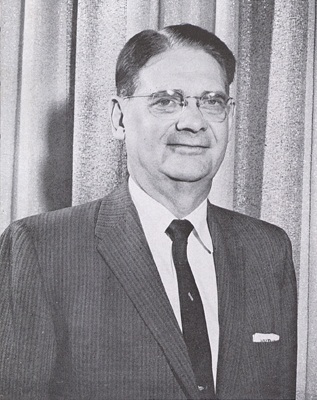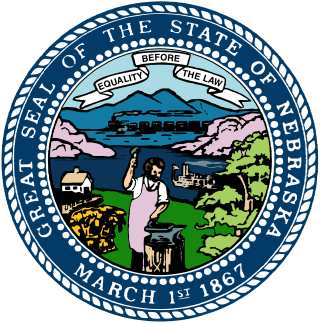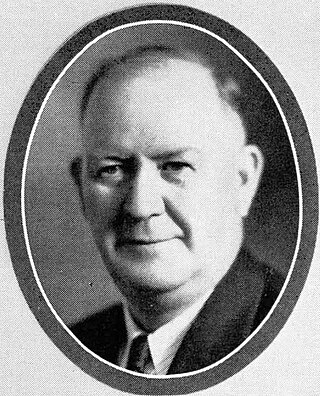
The 1958 United States Senate elections were elections for the United States Senate which occurred in the middle of President Dwight D. Eisenhower's second term. Thirty-two seats of Class 1 were contested in regular elections, the new state of Alaska held its first Senate elections for its Class 2 and 3 seats, and two special elections were held to fill vacancies.

Victor Emanuel Anderson was an American politician from the state of Nebraska. A member of the Republican Party, he served in the Nebraska Legislature, as mayor of the capital city of Lincoln, and as the 28th governor of the state.

Ralph Gilmour Brooks was an American Democratic politician who served as the 29th Governor of Nebraska.

The 1958 California gubernatorial election was held on Tuesday November 4. Incumbent governor Goodwin Knight initially ran for re-election to a third term, but eventually withdrew and ran for election to the Senate. Incumbent senator William Knowland switched places with Knight to run for governor, but was defeated in a landslide by Democratic Attorney General Pat Brown, who won the first of his two terms as governor of California.

North Carolina elections to choose members of the Council of State were held November 4, 2008. This coincided with the presidential, U.S. Senate, U.S. House, gubernatorial, and statewide judicial elections.

The 1898 South Dakota gubernatorial election was held on November 8, 1898. Incumbent governor Andrew E. Lee, elected in 1896 as a Populist, he ran for re-election as a Fusion candidate. He was challenged by Republican nominee Kirk G. Phillips, the state treasurer. Lee narrowly defeated Phillips to win his second term as governor, but most of his Fusion allies lost their elections, leaving him as the lone statewide officeholder.

The 1956 Washington gubernatorial election took place on November 6, 1956, between Democratic state senator Albert Rosellini and Republican lieutenant governor Emmett T. Anderson.

The 1960 United States Senate election in Nebraska took place on November 8, 1960. The incumbent Republican Senator, Carl Curtis, was re-elected by a smaller margin than in the previous election, in 1954. He defeated Democratic candidate Robert B. Conrad. His victory underperformed Richard Nixon, the Republican presidential nominee, who won Nebraska by 24% in the presidential election.

The 1962 Nebraska gubernatorial election was held on November 6, 1962, and featured incumbent Governor Frank B. Morrison, a Democrat, defeating Republican nominee, former U.S. Secretary of the Interior Fred A. Seaton, to win a second two-year term in office.

The 1960 Nebraska gubernatorial election was held on November 8, 1960, and featured attorney and frequent political candidate Frank B. Morrison, a Democrat, defeating Republican nominee, state Senator John R. Cooper.

The 1956 Nebraska gubernatorial election was held on November 6, 1956, and featured incumbent Governor Victor E. Anderson, a Republican, defeating Democratic nominee, former state Senator Frank Sorrell, as well as independent George Morris, to win a second two-year term in office.

The 1946 Nebraska gubernatorial election was held on November 5, 1946, and featured former school superintendent and newspaper publisher Val Peterson, a Republican, defeating Democratic nominee, state Senator Frank Sorrell.

The 1938 Nebraska gubernatorial election was held on November 8, 1938, and featured incumbent Governor Robert L. Cochran, a Democrat, defeating Republican nominee, Speaker of the state legislature Charles J. Warner, as well as former Democratic Governor Charles W. Bryan, who ran as an Independent, to win a third and final two-year term in office.

The 1932 Nebraska gubernatorial election was held on November 8, 1932, and featured incumbent Governor Charles W. Bryan, a Democrat, defeating Republican nominee, newspaper publisher and former state legislator Dwight Griswold, to win a third and final two-year, non-consecutive term in office.

A general election was held in the U.S. state of Wyoming on Tuesday, November 5, 1974. All of the state's executive officers—the Governor, Secretary of State, Auditor, Treasurer, and Superintendent of Public Instruction—were up for election. Democratic gubernatorial nominee Edgar Herschler won a sizable victory in the gubernatorial election, and while Democrats generally improved their margins in the other statewide races, they fell short in all four.

The 1964 Nebraska lieutenant gubernatorial election was held on November 3, 1964, and featured 31-year-old Philip C. Sorensen, a Democrat, defeating Republican nominee Charles Thone. Incumbent lieutenant governor Dwight W. Burney decided to run for Governor of Nebraska and thus did not run for reelection as lieutenant governor.

The 1960 Nebraska lieutenant gubernatorial election was held on November 8, 1960. Prior to the election, on September 9, 1960, Nebraska Governor Ralph G. Brooks died while in office. This caused then Nebraska Lieutenant Governor Dwight W. Burney to become Governor of Nebraska two months before the election in which he was running for reelection as lieutenant governor. Thus, the 1960 lieutenant governor election featured incumbent Nebraska Governor Dwight W. Burney, a Republican, defeating Democratic nominee Norman A. Otto, who was chosen by the Nebraska Democratic Party to replace Edward A. Dosek, who had won the Democratic primaries but had withdrawn from the race.

The 1958 Nebraska lieutenant gubernatorial election was held on November 4, 1958, and featured incumbent Nebraska Lieutenant Governor Dwight W. Burney, a Republican, defeating Democratic nominee Frank Sorrell.

The 1950 Nebraska lieutenant gubernatorial election was held on November 7, 1950, and featured incumbent Nebraska Lieutenant Governor Charles J. Warner, a Republican, defeating Democratic nominee Edward A. Dosek, a businessman, to win his second term as lieutenant governor.

The 1944 Nebraska lieutenant gubernatorial election was held on November 7, 1944, and featured incumbent Nebraska Lieutenant Governor Roy W. Johnson, a Republican, defeating Democratic nominee Edward A. Dosek.















